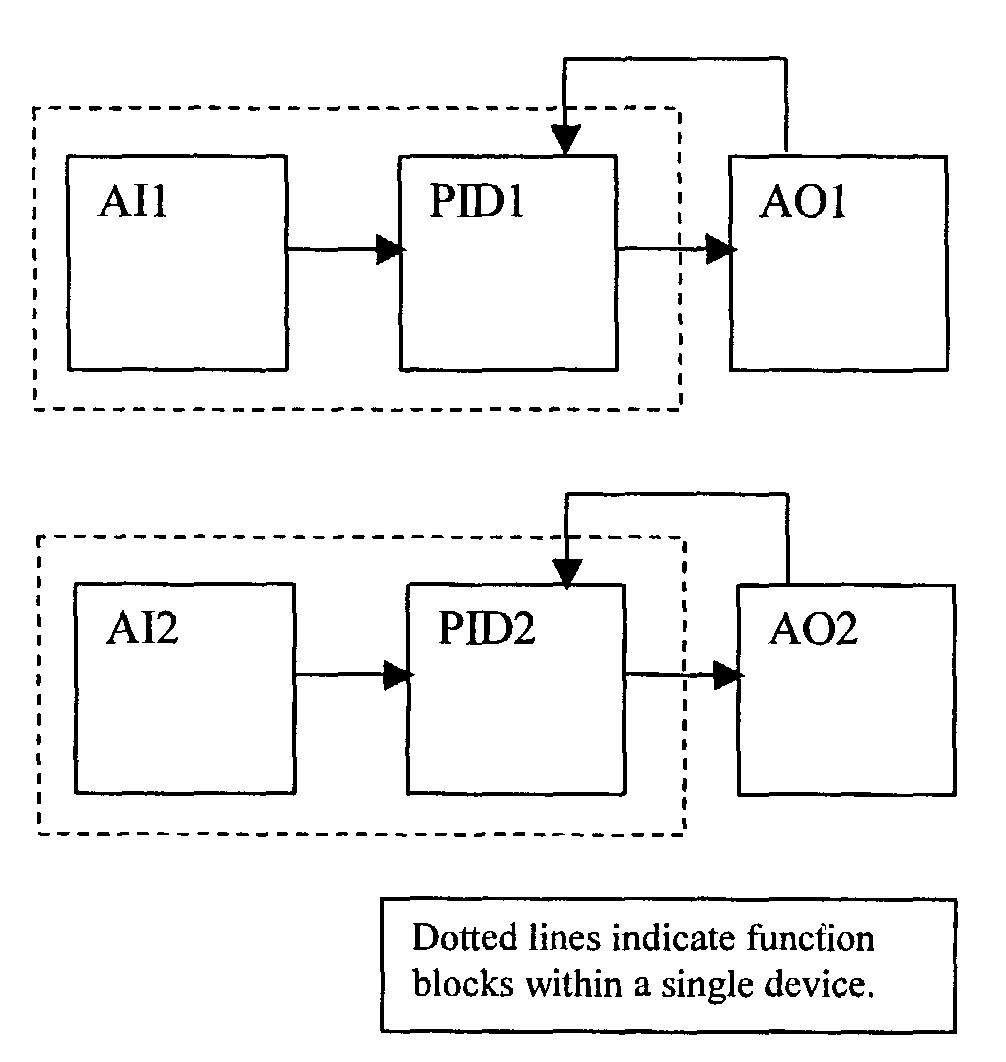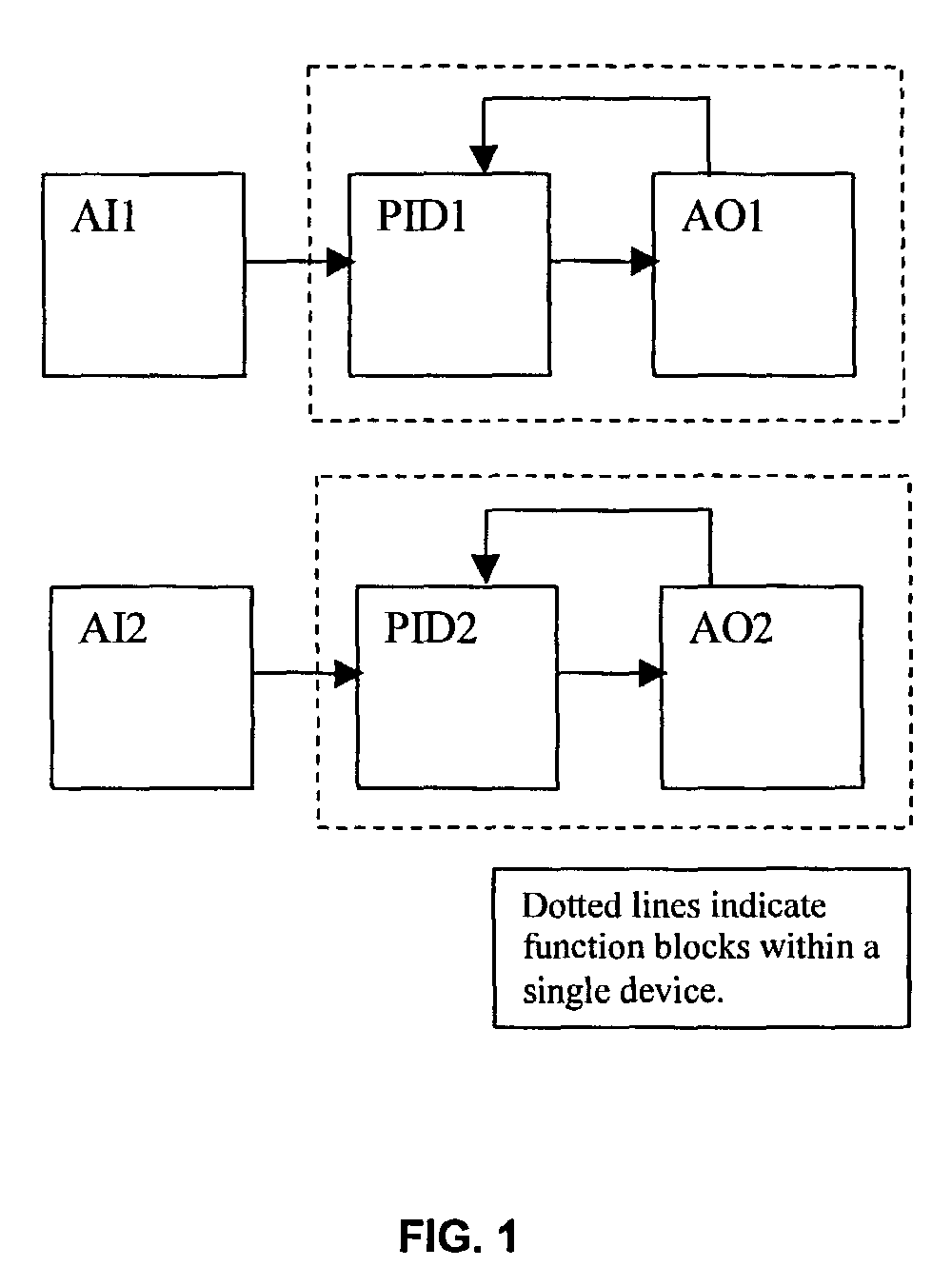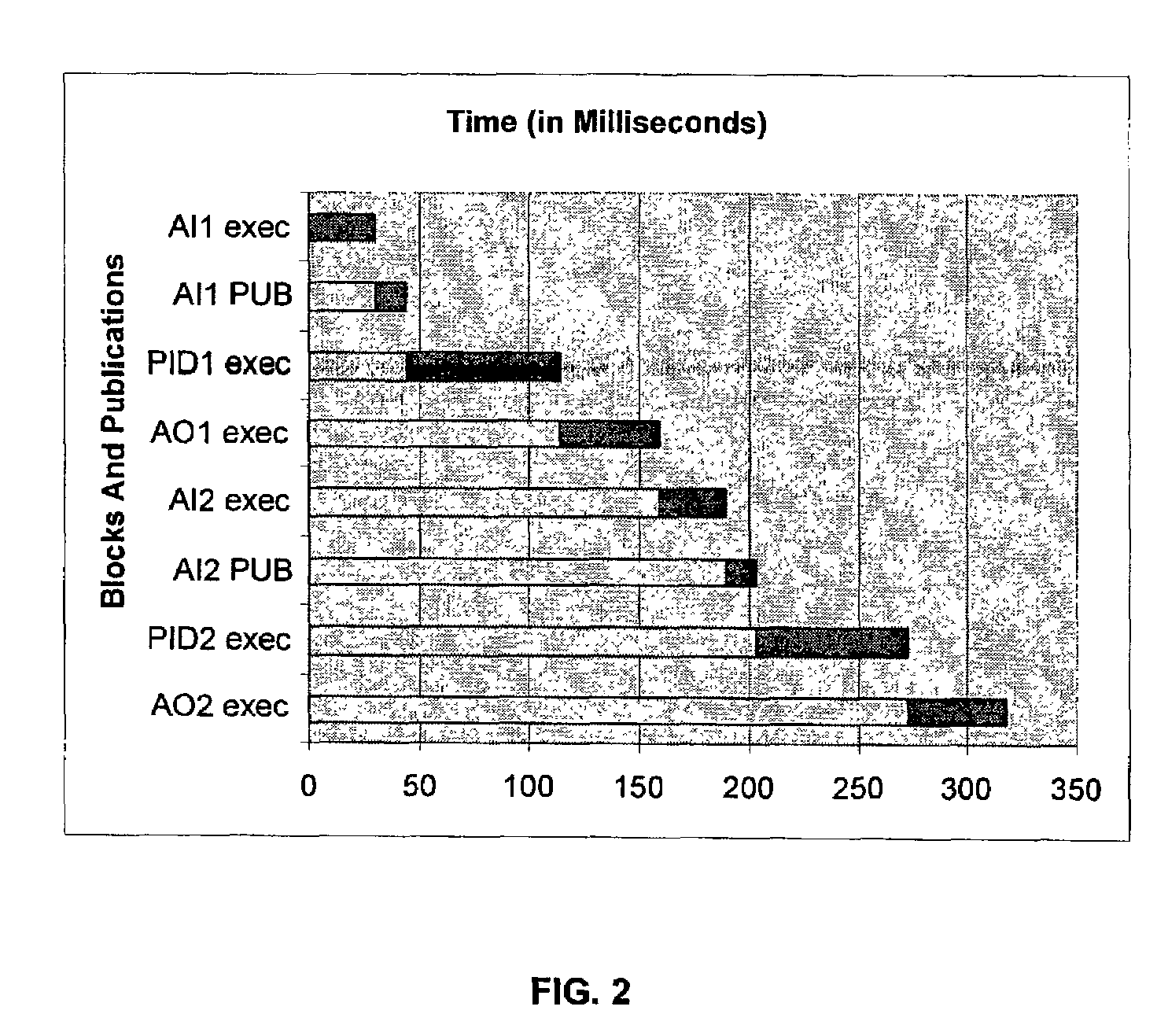Method for optimizing a link schedule
a link schedule and optimization technology, applied in the field of communication networks, can solve the problems of affecting the display call-up of operator stations, affecting the quality of the content of the link schedule, and restricting the scheduling to some degr
- Summary
- Abstract
- Description
- Claims
- Application Information
AI Technical Summary
Benefits of technology
Problems solved by technology
Method used
Image
Examples
example 1
4.0 Example 1
Two Simple Loops, Control in Actuator
[0129]As shown in FIG. 1, when simple loop control is co-resident with the actuator, there is only one publication from the transmitter to the actuator for each loop.
4.1 Natural Link Schedule
[0130]The natural link schedule set forth below, and reflected in FIG. 2, indicates that the blocks of the first loop are executed first, in natural sequence. The second loop sequences identically, but does not start until the first loop completes its execution in its entirety. (The time offsets are in milliseconds.)
[0131]
SchedulePubUsableFunctionStartLengthEndGapGapAI1 exec03030AI1 PUB301444827812PID1 exec4470114AO1 exec11445159AI2 exec15930189AI2 PUB18914203145130PID2 exec20370273AO2 exec27345318972942
4.2 Optimized Link Schedule
[0132]The optimized link schedule is set forth below and is reflected in FIG. 3. Under the assumption that the first sequence is assigned to the schedule before the second sequence, the second sequence is assigned via 3....
example 2
5.0 Example 2
Two Simple Loops, Control in Transmitter
[0136]Although the functionality is identical to the previous example (two simple control loops), the link scheduling differs. When simple loop control is co-resident with the transmitter, there are two publications: one, the output from the controller to the actuator, and a second, the back-calculation parameter from the actuator back to the controller. As indicated in FIG. 4, these occur for each of the two loops.
5.1 Natural Link Schedule
[0137]As indicated below, and as reflected in FIG. 5, the natural link schedule executes the blocks of the first loop first with the publication of the PID1's output done as soon as the value is calculated, and the back-calculation of the actuator published as soon as it is available. The second loop sequences identically, but does not start until the first loop completes its execution in its entirety, including the back-calculation.
[0138]
SchedulePubUsableFunctionStartLengthEndGapGapAI1 exec0303...
example 3
6.0 Example 3
Triple Signal Selector
[0144]When triple redundant inputs are used, an input-selector block chooses one—or the average of some or all of the inputs-depending on the goals of the configuration. FIG. 7 sets forth an example using a triple signal selector.
6.1 Natural Link Schedule
[0145]As shown below, and as reflected in FIG. 8, the natural link schedule executes the first AI block that immediately publishes its output. Then, the second AI block is executed, publishing its output immediately. Next, the third AI block is executed, publishing its output immediately. Finally, the Input-Selector block executes, followed by the PID and AO blocks.
[0146]
SchedulePubUsableFunctionStartLengthEndGapGapAI1 exec03030AI1 PUB301444898883AI2 exec443074AI2 PUB741488300AI3 exec8830118AI3 PUB11814132300ISel exec13230162PID exec16270232AO exec23245277958883
6.2 Optimized Link Schedule
[0147]To minimize skew, “No-Sample-Skew” can be selected and all three values can be simultaneously sampled in t...
PUM
 Login to View More
Login to View More Abstract
Description
Claims
Application Information
 Login to View More
Login to View More - R&D
- Intellectual Property
- Life Sciences
- Materials
- Tech Scout
- Unparalleled Data Quality
- Higher Quality Content
- 60% Fewer Hallucinations
Browse by: Latest US Patents, China's latest patents, Technical Efficacy Thesaurus, Application Domain, Technology Topic, Popular Technical Reports.
© 2025 PatSnap. All rights reserved.Legal|Privacy policy|Modern Slavery Act Transparency Statement|Sitemap|About US| Contact US: help@patsnap.com



